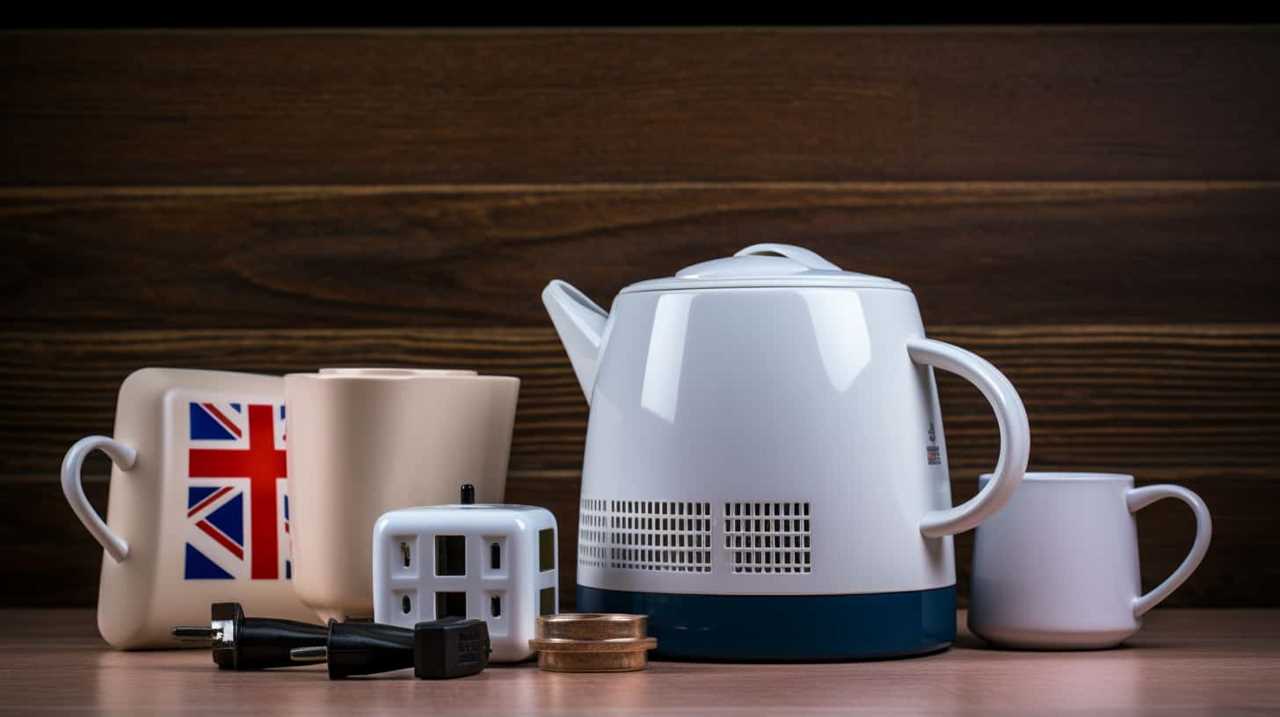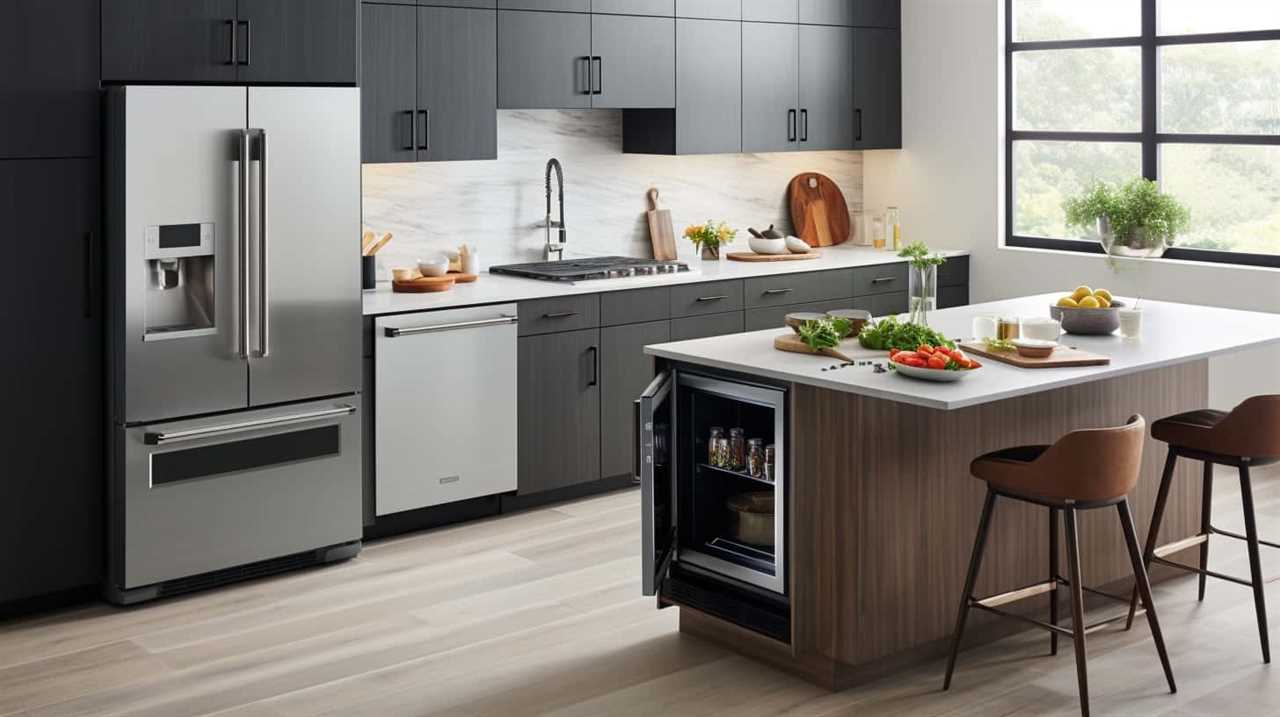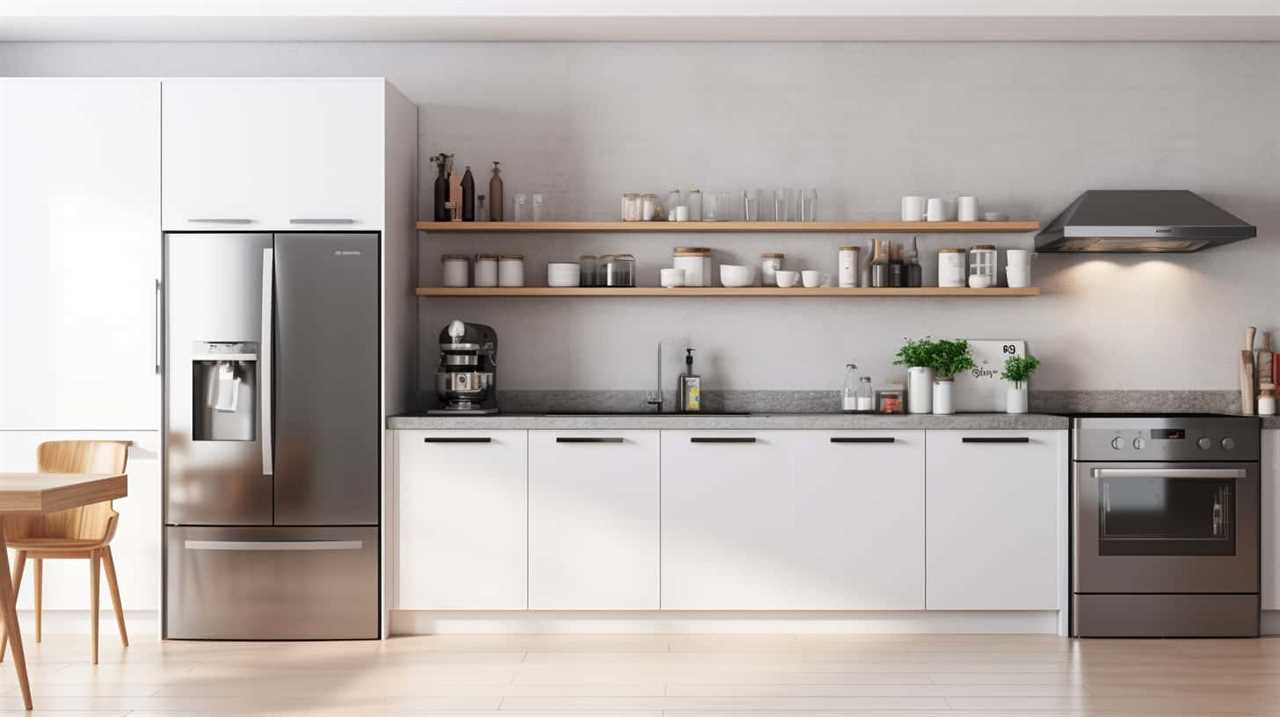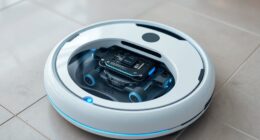Do appliances consume electricity when they are plugged in? This is a question that has crossed the minds of many, as we strive to comprehend how our devices affect our energy usage.
In this article, we delve into the realm of standby power and explore the concept of phantom load. We aim to debunk myths, shed light on vampire appliances, and provide energy-saving tips that will empower you to take control of your appliance’s energy usage.
Are you ready to master the art of efficient energy management?
Key Takeaways
- Standby power and phantom load refer to the electricity consumed by appliances when they’re plugged in but not actively in use.
- Phantom load can account for up to 10% of a household’s energy usage.
- Unplugging energy vampires like chargers, gaming consoles, and televisions can reduce phantom load.
- Using power strips and turning them off when not in use can eliminate standby power consumption.
Standby Power: What Is It
Standby power refers to the electricity consumed by appliances when they’re plugged in but not actively in use. Understanding standby power is crucial for implementing effective energy-saving techniques and reducing unnecessary energy consumption.

By analyzing the standby power usage of appliances, we can identify opportunities for standby power reduction and implement strategies to minimize energy waste. Energy-saving techniques such as using power strips with on/off switches, unplugging devices when not in use, and investing in energy-efficient appliances can significantly reduce standby power consumption.
It’s important to note that standby power can account for a significant portion of household energy usage, so implementing these strategies can lead to substantial energy and cost savings.
Understanding Phantom Load
Phantom load poses a significant challenge in managing household energy consumption efficiently. It refers to the electricity consumed by appliances and electronic devices even when they’re in standby mode or turned off. This hidden consumption can account for up to 10% of a household’s energy usage.
To reduce phantom load and save energy, consider the following:

- Unplug Energy Vampires: Identify and unplug devices that continue to draw power even when not in use, such as chargers, gaming consoles, and televisions.
- Use Power Strips: Plug multiple devices into power strips and turn off the strip when not in use. This can eliminate standby power consumption for several devices at once.
- Invest in Smart Power Strips: These power strips are designed to automatically cut off power to devices that aren’t in use, reducing phantom load effectively.
Myth or Fact: Do Appliances Use Electricity When Turned off
Appliances continue to consume electricity even when turned off, but it’s important to debunk any misconceptions surrounding this issue.
Many people believe that when an appliance is switched off, it no longer uses any power. However, this is a myth. Even when appliances aren’t actively running, they often still draw a small amount of power, known as standby power or vampire power. This power is used to maintain certain functions like clocks, timers, or memory settings.
The energy usage of switched off appliances may vary depending on the type and model, but it’s generally a small fraction of their active power consumption. Therefore, it’s crucial to be aware of the energy consumption of appliances even when they’re turned off, as it can contribute to overall energy wastage.
Now, let’s explore the hidden culprit: vampire appliances.

The Hidden Culprit: Vampire Appliances
Now let’s shift our focus to the hidden culprits of energy consumption: vampire appliances. These sneaky devices, also known as phantom power consumers, continue to draw power even when they aren’t in use.
This phenomenon, known as phantom power consumption, can account for a significant portion of our electricity bills.
To combat this, energy-saving power strips are available, which allow us to easily shut off power to multiple appliances at once and reduce unnecessary energy wastage.
Phantom Power Consumption
When plugged in, appliances consume electricity even when not in use, thanks to the hidden culprit known as phantom power consumption. This phenomenon occurs when devices are left in standby mode, constantly drawing power from the electrical grid.

To address this issue and promote phantom power awareness, here are three key strategies for reducing standby consumption:
- Unplug appliances when not in use: By simply disconnecting devices from the power source, you can eliminate phantom power consumption altogether.
- Use power strips with on/off switches: Power strips with individual switches allow you to easily turn off multiple appliances at once, preventing them from continuously drawing power.
- Invest in energy-efficient appliances: Upgrading to energy-efficient models can significantly reduce standby consumption, as these appliances are designed to use minimal power when not in use.
Energy-Saving Power Strips
We can combat phantom power consumption by utilizing energy-saving power strips, which are designed to eliminate the hidden culprit of vampire appliances.
Energy-saving power strips, also known as smart power management devices, are equipped with advanced features that help reduce energy waste caused by standby power. These power strips are designed to detect when devices aren’t in use and automatically cut off power to them, preventing them from drawing unnecessary electricity.
Additionally, some energy-saving power strips come with built-in timers or occupancy sensors, allowing users to schedule when devices should be turned off or automatically power down when a room is unoccupied.

By using energy-saving power strips, consumers can significantly reduce their energy consumption and save money on their electricity bills.
Transitioning into the subsequent section about ‘energy-saving tips for appliances,’ it’s important to note that while energy-saving power strips are effective in reducing standby power consumption, there are additional measures individuals can take to further enhance energy efficiency in their homes.
Energy-Saving Tips for Appliances
To maximize energy efficiency, we recommend implementing appliance-saving measures. By following these tips, you can reduce energy consumption and save on electricity bills:
- Choose Energy-Efficient Appliances: Opt for appliances with the Energy Star label. These appliances are designed to consume less energy, saving you money in the long run.
- Unplug or Use Power Strips: Many appliances consume standby power even when not in use. Unplug them when not in use or connect them to power strips that can be easily switched off.
- Adjust Settings: Adjust the settings on your appliances to minimize energy usage. For example, set your refrigerator’s temperature at the recommended level and use the economy mode on your dishwasher and washing machine.
The Impact of Unplugging Appliances
Unplugging appliances when not in use can lead to significant energy savings and long-term cost benefits.

By disconnecting appliances from the power source, we eliminate standby power consumption, also known as vampire power, which can account for a substantial portion of our electricity bills.
Additionally, reducing our energy consumption not only helps us save money but also reduces our carbon footprint, contributing to a more sustainable future.
Energy Savings From Unplugging
When considering the impact of unplugging appliances, it’s important to understand the potential energy savings that can be achieved. By adopting energy-saving habits and implementing power-saving techniques, significant reductions in electricity consumption can be accomplished. Here are three key ways in which unplugging appliances can lead to energy savings:
- Standby power consumption: Many appliances consume electricity even when they aren’t in use but remain plugged in. By unplugging these appliances, such as televisions, gaming consoles, and chargers, you can eliminate standby power consumption and save energy.
- Vampire power: Some appliances, like microwaves and coffee makers, continue to draw a small amount of power even when they’re turned off. Unplugging these appliances when not in use prevents them from consuming energy unnecessarily.
- Cumulative savings: While the energy savings from unplugging individual appliances may seem small, they can add up significantly over time. By consistently unplugging appliances when not in use, you can contribute to a substantial reduction in energy consumption and lower your electricity bills.
Long-Term Cost Benefits
By consistently unplugging appliances, we can achieve long-term cost benefits through reduced electricity consumption. Investing in energy-efficient appliances is a smart choice for long-term savings. These appliances are designed to use less energy while still providing the same level of functionality. Let’s take a look at the potential long-term cost benefits of unplugging appliances and using energy-efficient ones:

| Appliance | Average Monthly Energy Consumption (kWh) | Cost per kWh (\() | Monthly Cost (\)) | |
|---|---|---|---|
| Old | 80 | 0.12 | 9.60 |
| New | 40 | 0.12 | 4.80 |
As the table shows, using an old appliance can cost twice as much as using a new, energy-efficient one. Over time, these savings can add up significantly. By making a conscious effort to unplug appliances when not in use and investing in energy-efficient models, we can reduce our electricity bills and contribute to a more sustainable future.
Now, let’s discuss the role of power strips in energy conservation.
The Role of Power Strips in Energy Conservation
To maximize energy efficiency, we can enhance energy conservation by utilizing power strips. Power strips offer several benefits and features that contribute to energy savings.
Here are three key advantages of using power strips:
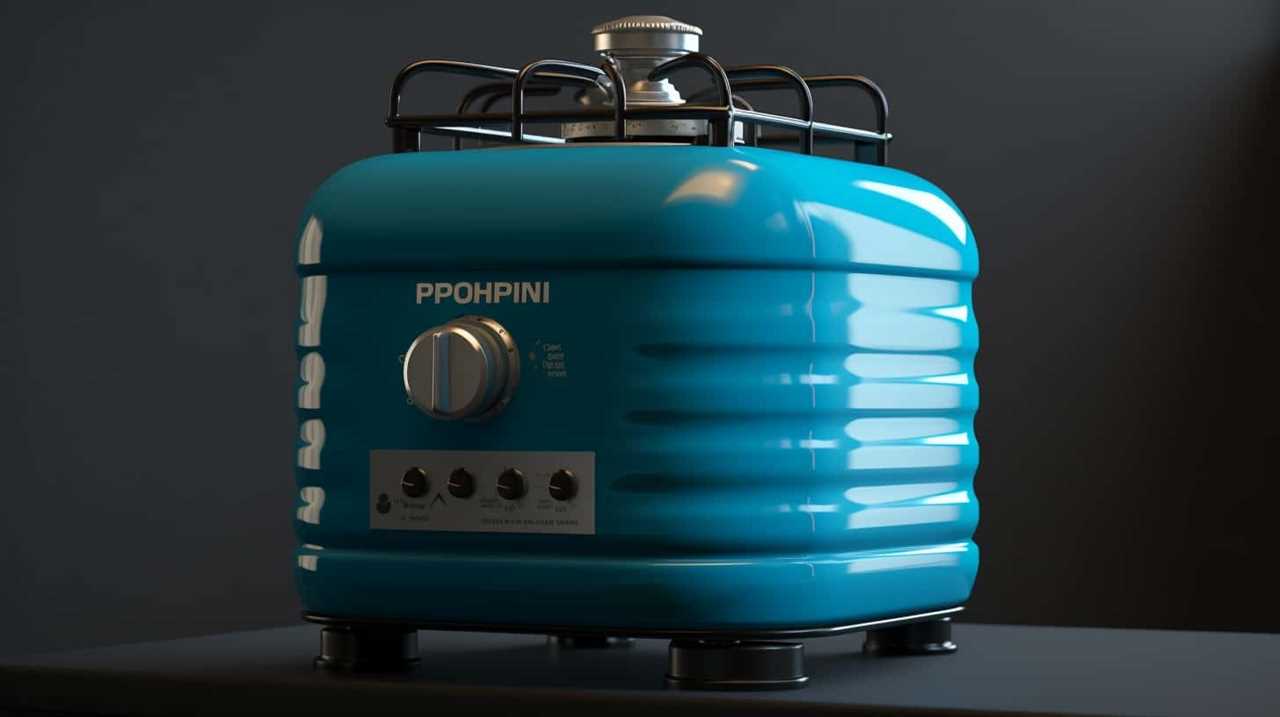
- Convenience and Control: Power strips allow you to easily turn off multiple devices with a single switch. This eliminates standby power consumption, which occurs when devices are left plugged in but not in use. By simply switching off the power strip, you can prevent unnecessary energy usage.
- Protection against Power Surges: Power strips often come with built-in surge protectors, safeguarding your appliances from voltage spikes. This not only prevents damage to your devices but also extends their lifespan, reducing the need for replacements and conserving resources.
- Reduced Vampire Power: Power strips can help eliminate vampire power, also known as phantom or standby power. Vampire power refers to the electricity consumed by devices even when they’re turned off but still plugged in. By using power strips, you can easily cut off the power supply to multiple devices, reducing unnecessary energy waste.
Smart Appliances and Energy Efficiency
When it comes to energy efficiency, smart appliances are revolutionizing the way we use electricity. These appliances are designed to optimize energy consumption, resulting in significant savings on electricity bills.
Not only do they help us reduce our energy costs, but they also have a positive impact on the environment by reducing greenhouse gas emissions and promoting sustainable living.
Energy-Saving Smart Appliances
Smart appliances contribute to energy efficiency and savings in households. These energy-saving appliances are designed to optimize energy usage and minimize waste.
Here are three key ways in which energy-efficient smart appliances make a significant impact:

- Smart Home Technology Integration: Energy-saving smart appliances can be seamlessly integrated into a smart home system, allowing for centralized control and optimization. Through advanced sensors and connectivity, these appliances can adjust their settings based on real-time data, such as energy demand and usage patterns.
- Energy Management Features: Many energy-efficient appliances come with energy management features that help users monitor and control their energy consumption. These features include programmable settings, energy usage tracking, and even remote control options, enabling users to make informed decisions and reduce unnecessary energy consumption.
- Smart Grid Interaction: Energy-saving smart appliances can also interact with the smart grid, allowing for more efficient energy distribution. These appliances can receive signals from the grid during off-peak hours when electricity rates are lower, optimizing their usage accordingly and reducing overall energy costs.
Impact on Electricity Bills
Energy-efficient smart appliances have a significant impact on electricity bills by reducing unnecessary energy consumption and optimizing usage. These appliances are designed to minimize power usage while still providing the same level of functionality. By using advanced technology such as sensors and automation, they can detect when they are not in use and enter power-saving modes. This reduces electricity consumption and ultimately lowers monthly expenses. Additionally, smart appliances can be programmed to operate during off-peak hours when electricity rates are lower, further reducing costs. To illustrate the potential savings, consider the following table:
| Appliance | Average Monthly Energy Consumption (kWh) | Monthly Cost ($) |
|---|---|---|
| Traditional | 120 | $15 |
| Smart | 80 | $10 |
As shown, the smart appliance consumes 40% less energy, resulting in a 33% reduction in monthly expenses. By investing in energy-efficient smart appliances, individuals can significantly reduce their electricity consumption and save money in the long run.
Environmental Benefits of Efficiency
Efficiency in appliances has positive environmental impacts by reducing energy consumption and minimizing carbon emissions. Energy-efficient appliances play a crucial role in reducing our carbon footprint and promoting sustainability.
Here are three key environmental benefits of using energy-efficient appliances:
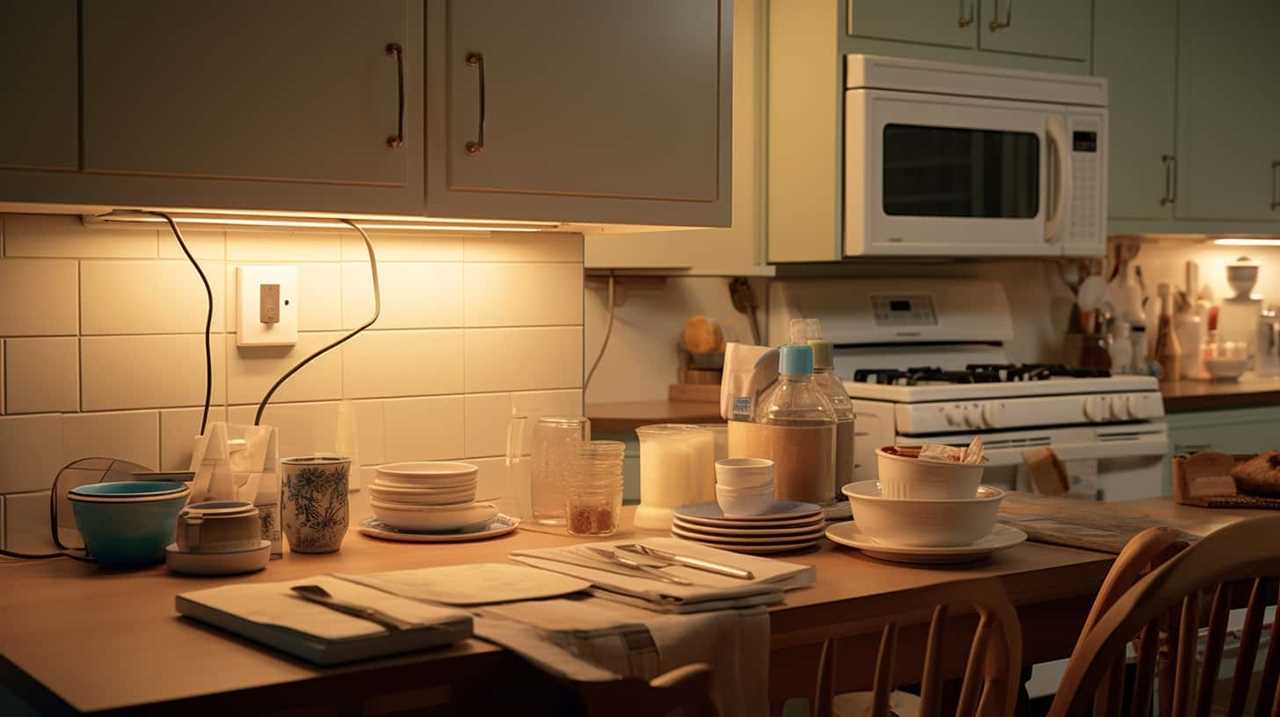
- Lower energy consumption: Energy-efficient appliances are designed to consume less power while delivering the same level of performance. By using these appliances, we can significantly reduce our overall energy consumption, leading to a decrease in greenhouse gas emissions.
- Reduced carbon emissions: Traditional appliances often rely on fossil fuels for electricity generation, resulting in significant carbon emissions. Energy-efficient appliances, on the other hand, require less energy to operate, leading to a reduction in carbon emissions and mitigating the impact on climate change.
- Conservation of natural resources: Energy-efficient appliances not only reduce energy consumption and carbon emissions but also contribute to the conservation of natural resources. By using less energy, we can decrease the demand for fossil fuels and other non-renewable resources, preserving them for future generations.
Assessing the Energy Usage of Common Household Appliances
When assessing the energy usage of common household appliances, we need to consider the amount of electricity they consume while being plugged in. It’s important to note that even when appliances aren’t in use, they can still draw power if they’re left plugged in. This phenomenon is known as standby power or vampire power.
To reduce the energy consumption of appliances while they’re plugged in, there are several energy-saving techniques that can be implemented. One of the most effective ways is to unplug appliances when they aren’t being used. Additionally, energy-efficient upgrades such as purchasing appliances with the ENERGY STAR label can significantly reduce energy consumption.
Energy Monitoring Devices: Are They Worth It
We have found that investing in energy monitoring devices can be a worthwhile decision for homeowners. Here are three reasons why:
- Energy monitoring benefits: Energy monitoring devices provide real-time data on your energy consumption, allowing you to identify which appliances or behaviors are using the most energy. By tracking your energy usage, you can make informed decisions to reduce waste and lower your utility bills.
- Cost-effective monitoring devices: Energy monitoring devices come in various price ranges, making them accessible to homeowners with different budgets. These devices often pay for themselves over time by helping you identify and reduce energy wastage. With the ability to monitor and optimize your energy usage, you can potentially save hundreds of dollars annually.
- Increased energy efficiency: By using energy monitoring devices, you gain insight into your energy usage patterns and can make adjustments to improve efficiency. This can include scheduling appliances to run during off-peak hours or identifying faulty equipment that may be consuming excessive energy. Ultimately, energy monitoring devices empower you to make smarter choices and reduce your environmental impact.
Investing in energy monitoring devices is a prudent decision for homeowners seeking to optimize their energy usage, save money, and contribute to a greener future.

Taking Control: Managing Your Appliance’s Energy Consumption
To effectively manage our appliance’s energy consumption, it’s important for us to take control and make informed decisions. By implementing energy saving techniques and reducing standby power, we can significantly reduce our energy usage and save money in the process.
One effective technique is to unplug appliances when they aren’t in use or use power strips with on/off switches to easily disconnect multiple appliances at once. Additionally, adjusting the thermostat settings of our appliances, such as refrigerators and water heaters, to more energy-efficient levels can make a significant impact.
It’s also important to regularly clean and maintain our appliances to ensure they’re operating at their optimal efficiency. By taking control of our appliance’s energy consumption, we can make significant strides in reducing our environmental impact and saving on energy costs.
Frequently Asked Questions
How Much Electricity Does an Appliance on Standby Mode Consume?
When an appliance is on standby mode, it still consumes electricity. To calculate standby power consumption, you need to measure the wattage and duration. Unplugging appliances when not in use can save energy.
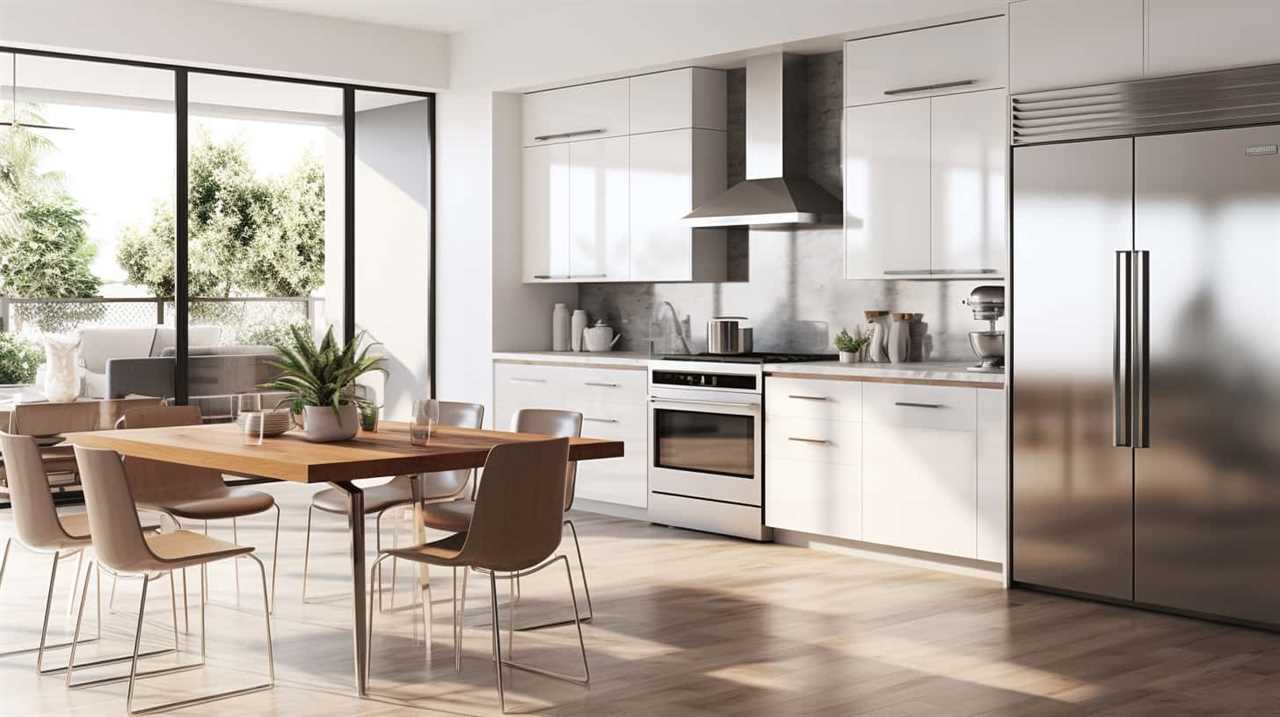
Can Appliances Still Use Electricity Even When They Are Not Plugged In?
Appliances can still use electricity even when not plugged in, but they consume less energy in sleep mode. The standby power they draw may have a small impact on energy bills.
Is It True That Appliances Continue to Use Electricity Even When They Are Turned Off?
Appliances can indeed consume electricity when turned off. However, by utilizing energy efficient alternatives and unplugging appliances when not in use, one can significantly reduce their electricity consumption and environmental impact.
How Can I Identify Vampire Appliances in My Home?
Identifying vampire appliances in our home is crucial for reducing standby power consumption. We can start by looking for energy efficient appliances that have low standby power usage. This will help us save energy and lower our electricity bills.
Are Power Strips Effective in Reducing Energy Consumption?
Are smart power strips worth the investment? Can power strips help reduce phantom power usage in the long run? We believe so. By automatically cutting off power to idle devices, they can effectively reduce energy consumption.
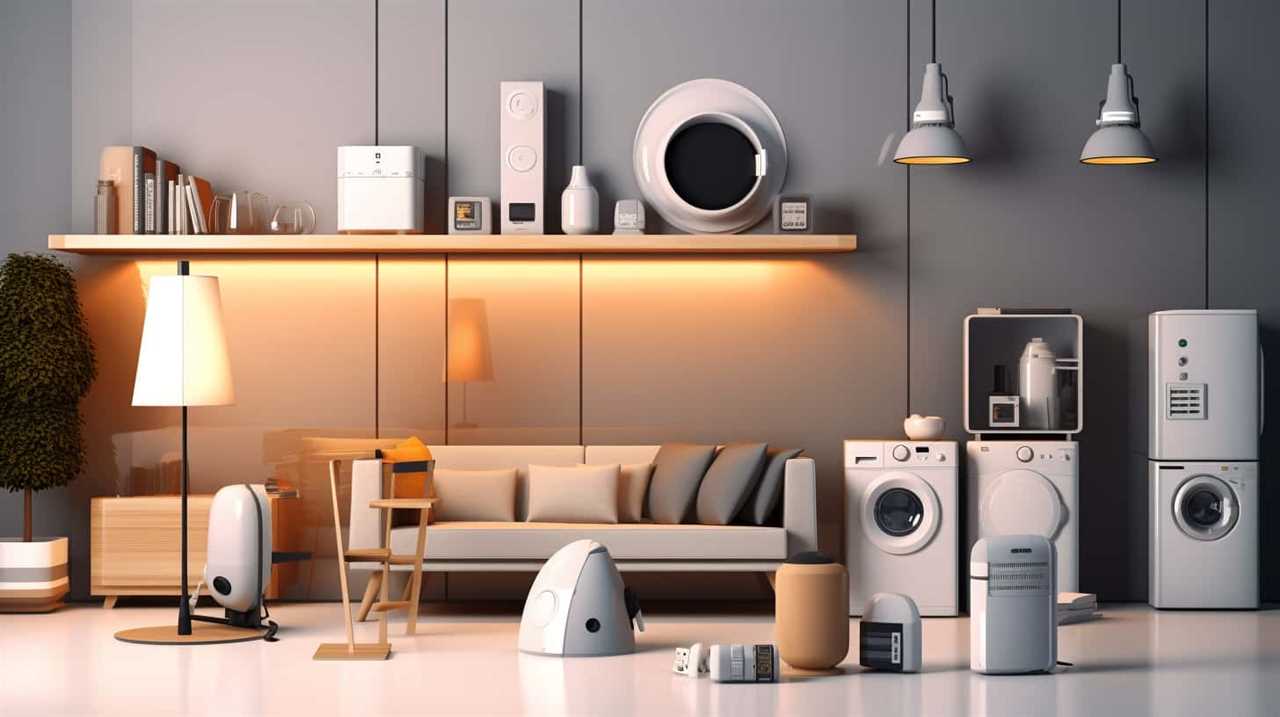
Conclusion
In conclusion, it’s essential to be aware of the electricity consumption of our appliances, even when they’re turned off.
Phantom load, also known as standby power, can contribute significantly to our energy bills.
By identifying and managing vampire appliances, adopting energy-saving practices, and considering smart appliances, we can reduce our energy consumption and save money.
As the saying goes, ‘A penny saved is a penny earned,’ so let’s take control of our appliance’s energy usage and make smarter choices for a greener future.
